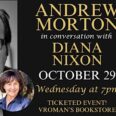Pasadena is known for its rich science heritage thanks to Caltech, the Carnegie Observatories and Jet Propulsion Laboratory. Now local historians are laying claim to a literary offshoot of science as being invented here, too: Science fiction as we know it today.
Just in time for the city’s 132nd birthday, an exhibit curated by the Pasadena Museum of History has artifacts from sci-fi’s early days that highlight the significance of Pasadena’s connection to the genre’s genesis.
Pasadena’s official open-to-all birthday party Sunday at the Museum will shine the spotlight on the exhibit, “Dreaming the Universe: The Intersection of Science, Fiction, and Southern California,” which pays homage to that local heritage with a partly-wacky, completely enjoyable assemblage of pop culture science fiction items related to many Pasadena residents throughout the decades.
Drop by the museum this weekend and experience the city’s history through a different lens, as well as a special birthday party bash.
“The idea of this exhibit is to show the connections between science and science fiction, between the technologies in our daily lives and connect that to Southern California and its history,” said Los Angeles Science Fantasy Society Board Member and exhibit curator Nick Smith. “There are a lot of connections of [Caltech] students and faculty who were major science fiction writers.”
The exhibit explores the sci-fi movement between the 1930s and the 1980s, which Smith says are the most definitive years for creativity and the genre as a whole.
“The 1930’s are when technology and communication, the publishing industry, and the fans all came together for kind of a explosion of ideas,” explained Smith. “And from the ‘60s and ‘70s you’ve got the science fiction at that time looking at all these cool new ideas. We’ve also got people in the space program looking at all the stuff from science fiction so those are some of the time periods we’re having some fun with,” added Smith.
So what exactly will be displayed in the exhibit? According to Smith, there’s not a simple answer.
“The physical artifacts in the exhibit are what is going to get the ‘gosh/wow’ effect when you walk in because there are things by artists whose work have never been shown together and that have connected stories,” said Smith.
Smith highlighted artifacts that include storyboards and design sketches from movies and TV shows, rare costumes from space age productions, personal items from famous writers such as Ray Bradbury of “Fahrenheit 451” fame, and much more.
“We’re getting some amazing loans from people who don’t normally loan things out and so the Academy of Motion Picture Arts and Sciences and Western Costume and NBC have all loaned us things that had been sitting in their archives that people don’t normally get to see that were used in different movies,” said Smith.
The exhibit spotlights many homegrown authors and artists of sci-fi fame and influence that Smith says have helped shape the genre stemming from the golden era days in the ‘30s all the way up to present day.
“You get all of these weird things going on. There are also people who started at Caltech as students and who ended up finishing their career elsewhere, but who became major writers in the science fiction field,” explained Smith.
The first Caltech student who became a major science fiction writer was L. Sprague de Camp who graduated from there in 1930, and produced a career that spanned 60 years and consists of over 100 books that include novels and works of non-fiction, such as biographies of other fantasy authors, according to Smith.
Eric Temple Bell, a mathematician who came to Caltech during the depression was also a science fiction writer under the name John Taine, says Smith.
“Also being shown alongside the artwork of people like Charles Schneeman who spent the last dozen years of his life here in Pasadena and was doing covers and interior illustrations for magazines at the time,” said Smith about the author who collaborated with Eric Temple Bell during their time in Pasadena.
Clare-Winger Harris was the first woman science fiction writer to get sci-fi literature published under her own name in the 1920’s and her stories often dealt with characters on the “borders of humanity” such as cyborgs, according to the Encyclopedia of Science Fiction.
“She ended up living in Marengo here in Pasadena,” said Smith about the author whose work is featured in the exhibit.
There’s artwork by famous neofuturistic artist Syd Mead whose work can be seen in feature films such as as Star Trek: The Motion Picture, Blade Runner, and more and whose design firm is located in Pasadena today.
Rare award pieces given to former Pasadena resident and “Dean of Science Fiction Artists” Frank Kelly Freas most known for creating will also be on display.
“They’re showing off a couple of his awards because you hear about the Hugo award for science fiction–they’re basically the Oscars of science fiction–but you don’t normally see them unless you go to the awards ceremony. And they’re different every year, which is what people don’t necessarily know about so we’re showing off a couple of widely different ones just to show what the awards can look like,” explained Smith.
The exhibit is expected to change throughout the course of months it will be open to the public, according to Smith, who says is just the way the sci-fi greats would want it to be.
“There are things that are going to be coming up during the course of the exhibit that are not there yet. This is an evolving exhibit–what people will see and hear when they go in,” explained Smith.
Dreaming the Universe will be on view in the History Center Galleries now through September 2, 2018.
The Pasadena Museum of History hosts the City of Pasadena 123rd Birthday Celebration this Sunday from 1 p.m. to 4 p.m. located at 470 W. Walnut Street.
For more information call (626) 577-1660 or go to www.pasadenahistory.org.


















